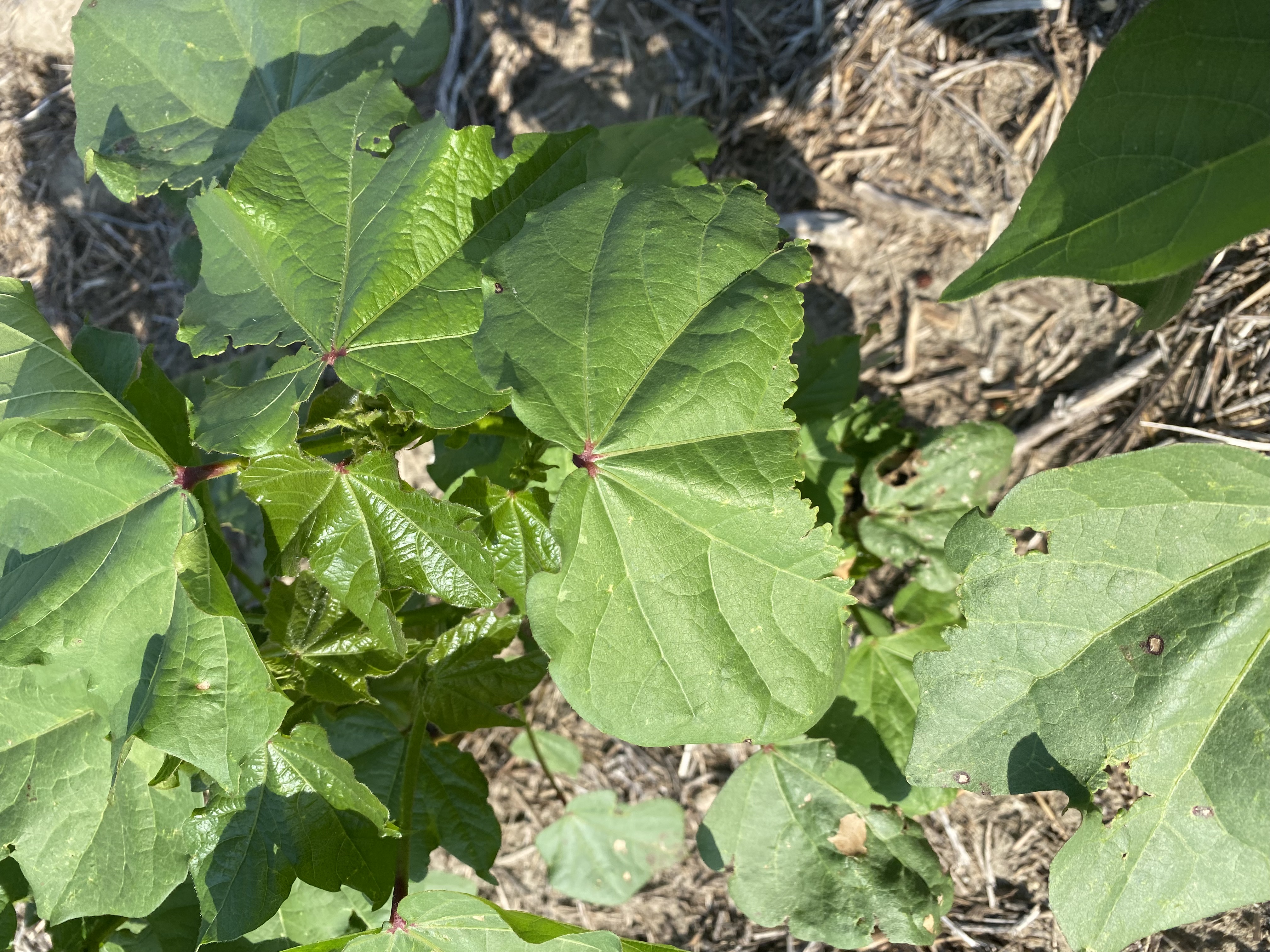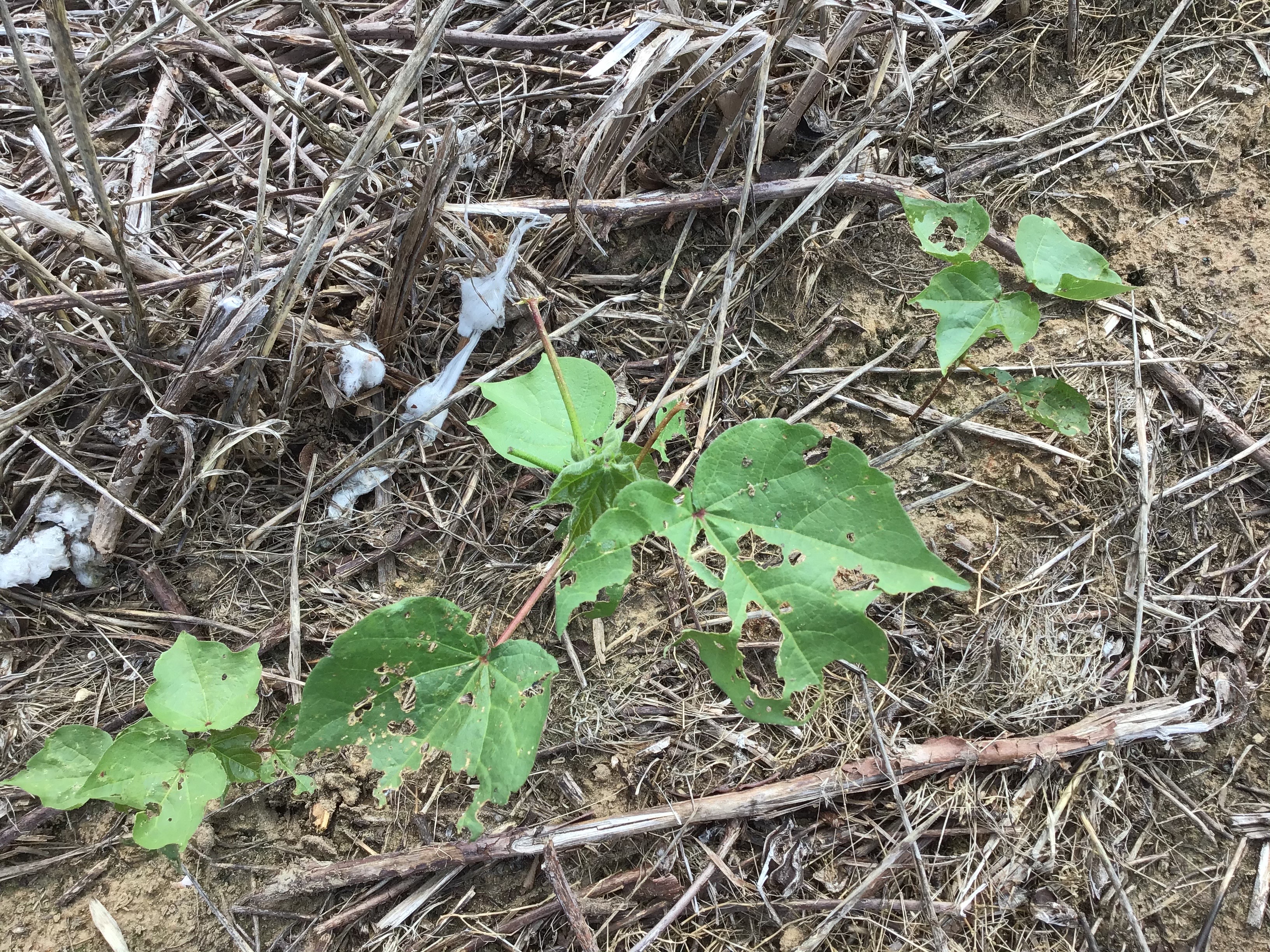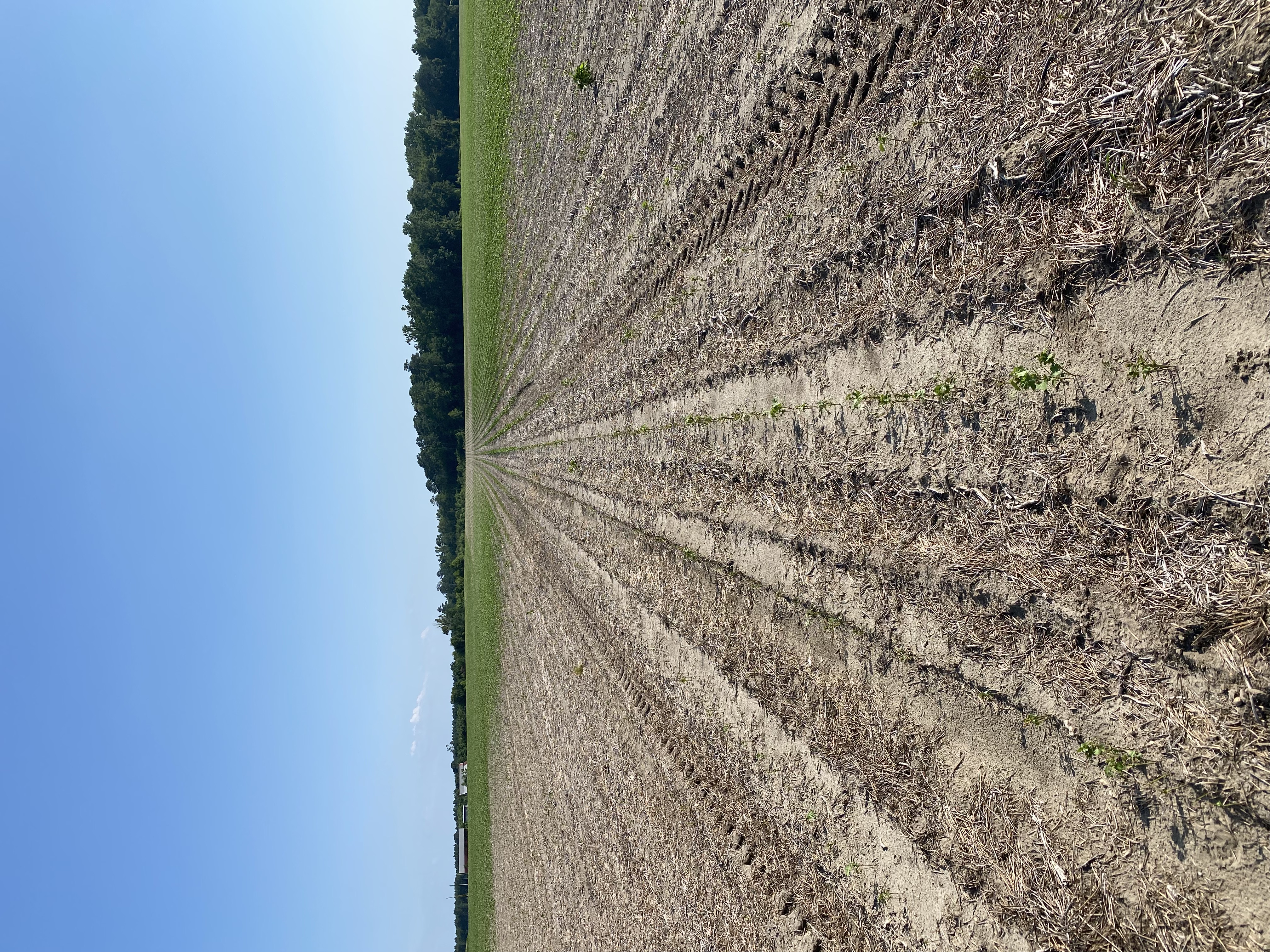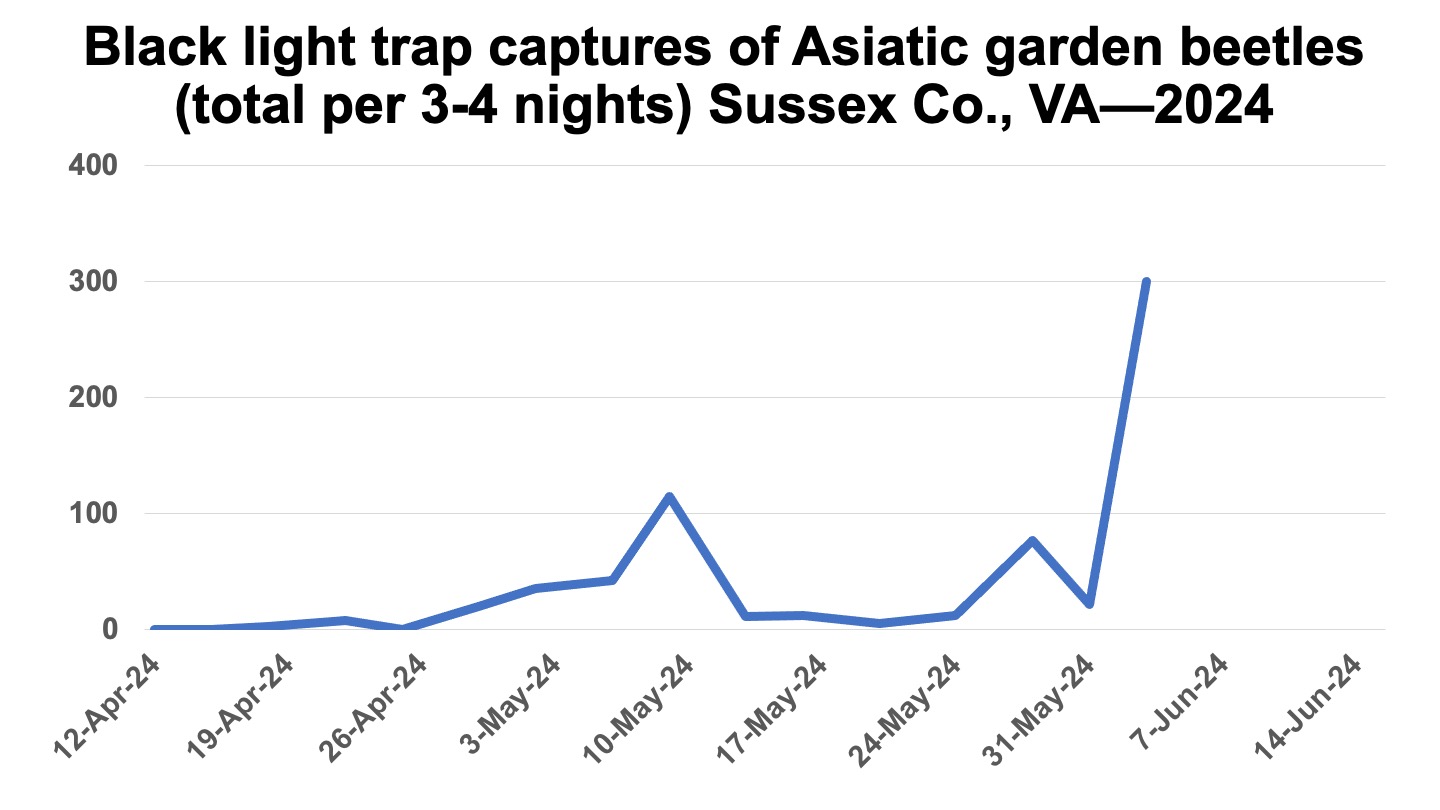Pest Alert- Scout for Foliage Feeding From Asiatic Garden Beetle
go.ncsu.edu/readext?1007314
en Español / em Português
El inglés es el idioma de control de esta página. En la medida en que haya algún conflicto entre la traducción al inglés y la traducción, el inglés prevalece.
Al hacer clic en el enlace de traducción se activa un servicio de traducción gratuito para convertir la página al español. Al igual que con cualquier traducción por Internet, la conversión no es sensible al contexto y puede que no traduzca el texto en su significado original. NC State Extension no garantiza la exactitud del texto traducido. Por favor, tenga en cuenta que algunas aplicaciones y/o servicios pueden no funcionar como se espera cuando se traducen.
Português
Inglês é o idioma de controle desta página. Na medida que haja algum conflito entre o texto original em Inglês e a tradução, o Inglês prevalece.
Ao clicar no link de tradução, um serviço gratuito de tradução será ativado para converter a página para o Português. Como em qualquer tradução pela internet, a conversão não é sensivel ao contexto e pode não ocorrer a tradução para o significado orginal. O serviço de Extensão da Carolina do Norte (NC State Extension) não garante a exatidão do texto traduzido. Por favor, observe que algumas funções ou serviços podem não funcionar como esperado após a tradução.
English
English is the controlling language of this page. To the extent there is any conflict between the English text and the translation, English controls.
Clicking on the translation link activates a free translation service to convert the page to Spanish. As with any Internet translation, the conversion is not context-sensitive and may not translate the text to its original meaning. NC State Extension does not guarantee the accuracy of the translated text. Please note that some applications and/or services may not function as expected when translated.
Collapse ▲Asiatic garden beetle is an invasive insect that is an occasional pest of seedling cotton in North Carolina. In 2023, growers noted foliar feeding on a locally sporadic, but regionally widespread, area. We covered this issue during county winter meetings in 2024. So far, the issue is more limited this year than last. We hope that growing conditions allow our cotton to continue to grow and outrun any potential issues going forward.
This insect spends most its life as a grub below the soil surface. During the spring, it emerges as an adult to mate and lay eggs for the next generation. The adults emerge at night, and will feed on the nearest available foliage, including cotton and many other plants. Here are clues for what to look for.
This insect is most prevalent in sandy soils. We have seen most issues from this insect in sandy-well drained soils, often where peanuts are grown, in areas as far south as Pitt County up north into Virginia. Scouts will first notice foliage feeding.

Foliage feeding from Asiatic garden beetle on cotton in the late-vegetative or early-squaring stages.
On cotton that has some size, foliage feeding is a non-issue. However, on seedling cotton, feeding can delay development and, in cases where the terminal is destroyed, can lead to plant death and severe stand loss.
Adult Asiatic garden beetles seem to be particularly sensitive to in-furrow insecticides, such as AgLogic. Often scouts will notice dead adult beetles that fed on cotton plants in fields treated with these insecticides. The beetles must feed on foliage to become intoxicated. However, even though there may be numerous dead beetles, feeding can still be significant.
A final clue is the presence of emergence tunnels from the adults. If scouts find these tunnels, they can often scratch just below the soil surface and find adults that have not yet emerged.
Unfortunately, Asiatic garden beetle emergence takes place over an extended time period and this is what makes treatment options complicated. Dr. Sean Malone (VA Tech) has been trapping Asiatic garden beetles in southeast Virginia during 2024. Note the distinct peaks in emergence and the long time periods of emergence. We may or may not have reached peak emergence for 2024.
Growers with Asiatic garden beetle injury on seedling cotton justifiably want to treat with foliar insecticides. Foliar insecticide control targeted at an insect in the soil is difficult. The insecticide must contact the insect. To do this, the insecticide would have to be applied at night, when the adults are most active. Furthermore, because the adults emerge over an extended time period, the insecticide should be timed at peak emergence. As mentioned previously, we may or may not be reaching peak emergence in a given field. Growers should not expect insecticides that do not contact adults that are still in the soil to be effective. Therefore, growers shouldn’t expect insecticide applications to eliminate the issue if more emerge following application.
Replanting of severely affected may be appropriate, but must be done so quickly. Replanting beyond the first week of June increases risks associated with late planting, therefore time is of the essence. Replanting, if needed, should be done by the end of this week. Growers should plant at a slightly higher rate (47000-48000 seed/A), plant shallow, and as quickly as possible. Replanting should be done in only the affected areas, and there’s no need to destroy the existing plants, but rather, simply plant into the exact same furrow as the first time, without disturbing the existing stand. If replanting is necessary, growers need not be concerned with maturity differences of replanted cotton versus the original stand planted 3 weeks ago (for example). Nearly every field in NC will have that kind of range in maturity anyway, simply due to natural field variation, even if emergence was uniform. Replanting could be necessary when 30% or more of the affected area is occupied by 3-ft skips or greater (skips consisting of dead seedlings), and terminals of surviving plants have been destroyed by beetles. If the terminal bud is intact, despite other foliar damage, and there is less than 30% of the affected area occupied by 3-ft skips (dead plants), replanting is not necessary.
NC State Extension is actively working with those who have experience with this insect and will work on improving recommendations going forward.







